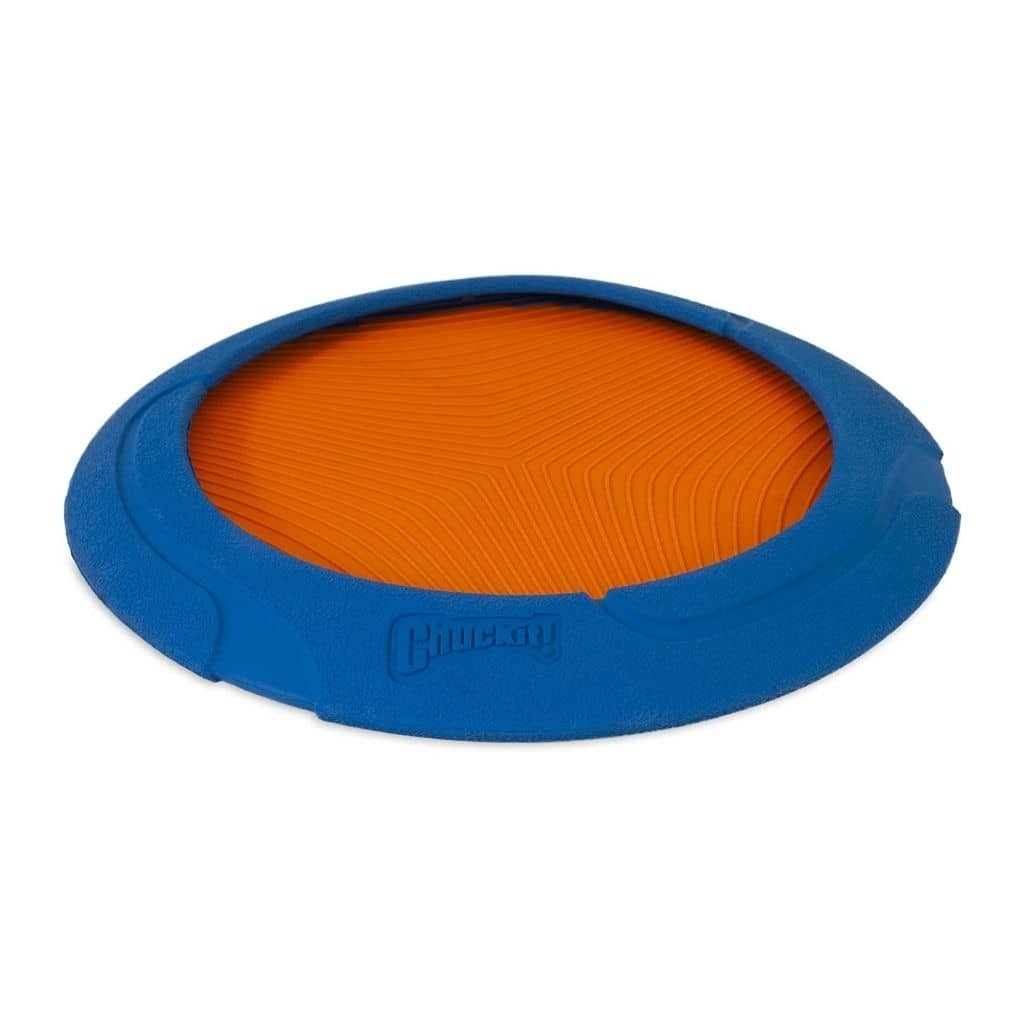ADHD i.e. Attention Deficit Hyperactivity Disorder refers to a condition which affects behaviour. This condition is mainly encountered in humans, especially in children. However, as scientists research more, many similarities pop up between the behaviour of young human children and dogs. So, it does beg a question, Can Dogs Have ADHD?
Before we get into the specifics of whether dogs can have ADHD, let’s understand this condition briefly.
You Might Also Like:
What is ADHD?
ADHD is a neurodevelopmental condition marked by extreme amounts of hyperactivity, inattention, and impulsivity. The symptoms indicating ADHD – are restlessness, difficulty focusing, continuous twitching, and acting without thinking. However, there is no precise reasoning behind what causes ADHD.
Can Dogs Have ADHD?

It’s uncommon for dogs to get ADHD. But, we know that hyperactivity is common in dogs, and as hyperactivity is one of the symptoms of ADHD, one cannot rule out the possibility of a dog having ADHD. Likewise, whenever dogs get hyperactive, relating it to ADHD is also probably not an accurate assumption. There is a definite cause behind the hyperactivity and unlike ADHD it is fixable.
Hyperactivity In Dogs
In general, dogs get hyperactive when they don’t receive attention or enough physical exercise. They get hyperactive when not getting attention because they are used to the frequent pampering and constant acknowledgement from their owners in the past.
Furthermore, hyperactivity in dogs is often confused with an identical behaviour that may indicate a rare condition i.e. hyperkinesis. In fact, one of the symptoms of hyperkinesis is hyperactivity. Other symptoms of hyperkinesis are – protein allergies, poor training, attention-seeking behaviour, or attention deficit disorders.
To counter hyperkinesis vets recommend daily exercise, socialization, stimulation or medication.
Signs Of Dogs ADHD
If the dog is getting much interaction with humans, is receiving enough exercise, and is not anxious or nervous about anything then, such hyperactive behaviour is an indication of ADHD.
Further, look for the following signs for confirming ADHD:
- Lack of focus
- Aggressive behaviour
- Extreme Restlessness
- Problematic chewing
- Training issues
- Non-stop running
- Excessive Barking
- Continuous desire to play
- Longer sleep than usual
Additionally, factors like age, breed, gender, and environment can also result in ADHD. So, what breed of dogs are likely to show signs of ADHD?
Dog Breeds Prone To ADHD Behaviour
Siberian Huskies, Border Collies, Retrievers, Labs, and Terriers are the working dogs. Their hyperactivity is genetically driven as traditionally they were physically active and would easily burn excess energy. These dogs are overactive and require positive reinforcement training to navigate the energy into suitable behaviour.
Further, hyperactive behaviour is also found more in these young and male dogs, especially those, who were left in social isolation for a longer duration. Identifying the symptoms of ADHD gets much easier with the distinction between Normal and Highly reactive (high-energy) dogs.
Normal Dog Behaviour
At times, dogs are super active, uncontrolled, and frequently disobedient. This behaviour is actually normal, especially for the puppies. They are young and need time to learn how to burn excessive energy.
To train the puppy to burn energy, the training sessions should remain short. However, if your puppy does have ADHD, these sessions must focus on simple tasks like walking on a leash or sitting.
High-Energy Dogs Behaviour
Many dogs show aggressive behaviour and are more reactive than others, but, that doesn’t mean they are hyperactive. They respond to the slightest change in the smell, sound, environment etc. with excessive energy. For instance, dogs barking at a stranger, vacuum cleaners, moving cars or shedding leaves.
In general, highly excited dogs risk getting diagnosed with ADHD. But, is there any way you can determine whether you have a normal or a high-energy dog? The answer is yes.
ADHD Test For Dogs
You can test your dog under a specific clinical environment and see whether they show any signs of ADHD. The Vet can assist you with the process. Once the vet examines your dog’s respiration and heart rate the dog will get a low dose of amphetamine.
Approximately, 120 minutes after the dose is given, the majority of dogs with hyperkinesis will mark a decrease in activity and excitement levels. Also, there is a significant drop in heart rate and respiration. An active/normal dog will have an opposite response to the dose. The levels will increase rather than decrease after the intake of the dose.
However, before taking the dog to the Vet you can easily conduct an ADHD test at home. This test may not give you the exact diagnosis, but provide you with the baseline. Using this baseline you can decide whether you need to consult a Vet or not.
Steps for ADHD test for dogs:

- Use a clicker for training, charge the clicker and feed them small treats with each click. Make sure the dog doesn’t jump while you offer the treat. Deliver the treat at the nose level. Still, if they grab the treat, toss them on the floor.
- Continue using the clicker, whenever they sit, use the clicker but, delay the treat by roughly about 2 seconds. Keep extending the delay period and do this for 2 minutes.
- Now, for 2-3 minutes continue giving the treat at the rate of 15-20 clicks/treat a minute. However, if the dog sits down, hold off for a few seconds and delay the treat by 5-6 seconds.
- After playing the waiting game, shuffle the schedule, randomly provide the treat and vary the pause. For example, pause for 1 second, 2, 5, 6 or 7 between the clicks.
- After executing the first few steps it’s time to stop clicking for a few seconds, approximately 25-30 sec.
- Observe the dog after the long pause. Now, if it looks at you or keeps looking at you, keep clicking. You can again play the waiting game for 2 minutes. If the dog looks away halt, and if they look back, click.
Home ADHD test for dogs: Post-test results analysis
If your dog was willing to play this game for 10-15 minutes with a minor lapse of concentration then you probably have a normal high-energy dog. In such cases, you’ll have to increase their exercises and training programs.
However, if your dog lost the focus after first few minutes, there is a strong possibility of ADHD or hyperkinesis. It’s best to immediately consult a Veterinarian and schedule the amphetamine test.
Tackling ADHD Symptoms In Dogs
In case your dog does get diagnosed with ADHD you can consider the following methods to address it.
Clinical Treatment
The diagnosis will be given by the Vet. So, it’s a no-brainer to start with clinical treatment. The common course of treatment is giving a small dosage of Ritalin (Methylphenidate). After the ingestion of this medication, they usually calm down within an hour or two.
Note: Ritalin is registered for only humans, however, Vets legally prescribe this as an extra-label drug.
Dosage Information: roughly 5 to 10 mg orally every 12 to 24 hours
Potential side-effects and safety measures
Even though the dosage of Ritalin is prescribed by the Vet, you have to take precautions, there are possible side effects and serious issues with using them.
Following are the conditions and safety measures to avoid potential side effects of Ritalin Drug:
- Avoid using the drug when the dog is hypersensitive or allergic to the drug.
- If the dog is prone to heart disease, or hypertension, it’s safe not to use the drug at all. The drug is known to increase blood pressure and that can lead to serious issues if the dog has a history of heart disease.
- The drug can also elevate nervousness, anorexia, and insomnia.
Natural Treatment
Nowadays, many people look for natural treatment and methods instead of clinical treatment. They may not show instant results like the medicines, but, these methods are effective and the chances of getting allergic reactions while using such natural medicines are slim. Below are some treatments you can consider:
- Use of Calming Herbs
- Calming Touch
- Calming Aromas
Treats Activity
Offering treats is a nice way to start tackling their ADHD symptoms. You can easily form up a treat activity that will help improve their focus and also help develop patience. Here is how you can break down a treat activity:
- Tossing the treat: Tossing the treat will grab their attention. You can toss it randomly and instruct the dog to find them.
- Patience (waiting game): As mentioned in the ADHD tests, have the dogs wait for the treat or hide them at different places and tell the dog to find them. Playing the waiting game will help the dog develop patience.
- Praising: Dogs seek attention. So, it becomes crucial to praise or reward the dog for its good behaviour.
Nowadays, there are automatic treat dispensers that you can use to offer treats to dogs. Using such automated dispensers, you teach the dog that not every time the situation is in its control. They have to wait for the treat and the equipment may excite the dog.
Exercise

Boredom and excess energy are the common factors which lead to hyper behaviour. Hence, it is necessary for dogs to get enough exercise. Let’s look at some simple exercises for the dog:
- Walk with the dog in a park
- Play with dog
- Use treats as a form of exercise
- Train extra if the dog is hyperactive, running may help
These were some ways you can tackle ADHD symptoms in the dog.
FAQs
Can dogs have ADHD?
Research studies are showing that dogs can show ADHD behaviour like humans. Hyperactivity in dogs is referred to as hyperkinesis. It is quite similar to what children experience and so, the same stimulant medications used for children are useful for treating dogs.
What are the symptoms of ADHD in Dogs?
Here are some of the ADHD symptoms in dogs– hyperactivity, short attention span, a high degree of impulsiveness, distraction, difficulty in training and so on.
Do all dogs have ADHD?
No. All dogs don’t have ADHD. They may suffer from symptoms of ADHD but often hyperactivity in dogs is directly associated with ADHD and such assumptions can lead one to think that all dogs have ADHD.
Final Opinion – Can Dogs Have ADHD?
Dogs can have ADHD, and missing the signs or symptoms can have a serious impact on their health. So, as a pet owner, it’s crucial to monitor their behaviour. In case your dog exhibits ADHD symptoms, conduct a small test or consult a Vet to get a diagnosis.
Even if the initial diagnosis reveals hyperactivity, it’s best you follow a specific method suggested by the vet or practitioner. In the UK, you can easily find a practitioner using ABTC (Animal Behaviour & Training Council) website.






